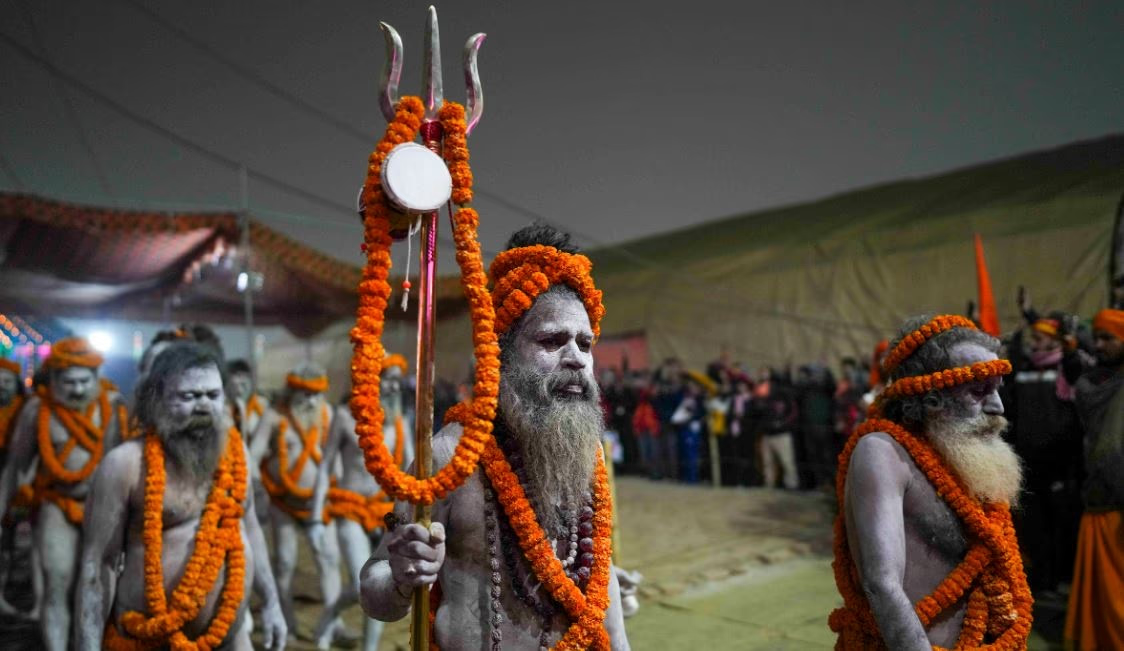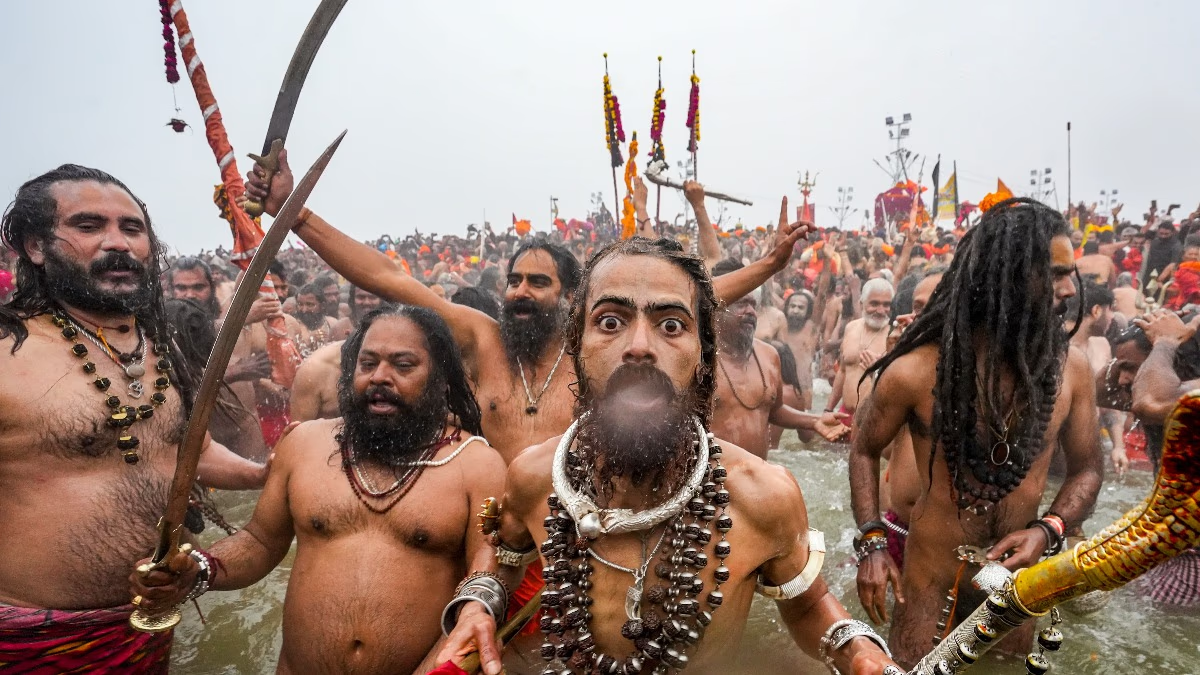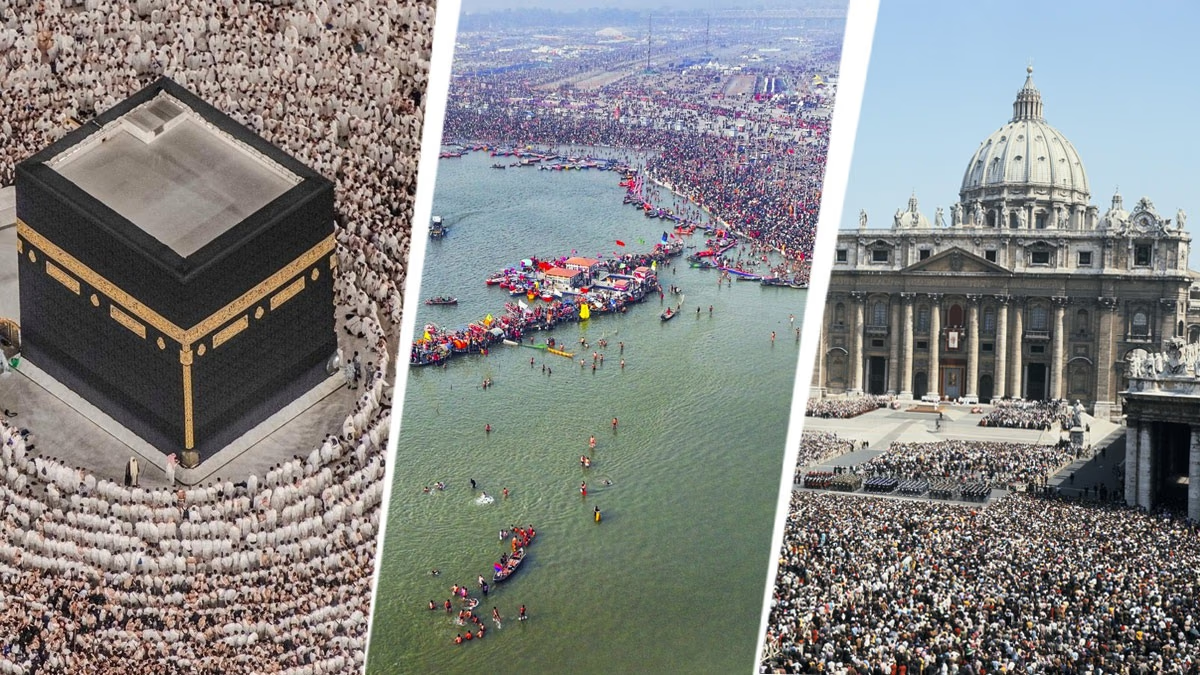The grand Mahakumbh of Prayagraj, 2025, is in full swing, drawing millions of enthusiasts for this majestic religious confluence. Initially, on Tuesday, the sacred Akhadas partook in the nectar bath, followed by ascetics and the devout immersing themselves in holiness at the sacred confluence. Among the notable attendees are the Naga Sadhus, participating fervently in rituals and baths alike. An enigma that accompanies these ascetics is the query: what becomes of their physical form after death?
Self-Conducted Last Rites
Naga Sadhus, in accordance with their profound spiritual journey, conduct their own last rites — Pind Daan — during their lifetime, a rite traditionally performed posthumously. This practice raises queries about their funerals, as per Hindu traditions, which uphold rites from birth to death. Unlike common funerary rites, Naga Sadhus have eschewed the usual cremation. Allow us to unravel this spiritual conundrum.
Narrated by Kotwal Akhandanand Maharaj of the Juna Akhada, upon death, a Naga Sadhu enters Samadhi — a spiritual merging with elements — without undergoing incineration. Be it Jal Samadhi or Bhu-Samadhi, igniting a Naga's cremation is strictly prohibited. Akhandanand Maharaj elucidates that by becoming a Naga Sadhu, one's worldly ties are dismissed, leading to a state where such rites are redundant.

Source: aajtak
The Practice of Bhu-Samadhi and Jal Samadhi
Akhandanand Maharaj indicates that Naga Sadhus, post-initiation, diverge from common rites like Pind Daan and cremation. They embrace either Jal-Samadhi, merging into water, or Bhu-Samadhi, return to the earth, as their final rite. An ascetic Swami Har Prasad shares that Naga Sadhus dedicate their existence to the divine, negating the need for fire cremation.
Formally, Naga Sadhus were committed to Jal-Samadhi, but to curb river pollution, Bhu-Samadhi is now preferred, positioning the Naga in Siddha Yog Mudra for spiritual liberation. This process involves cleansing the body's spirit with holy rituals preceding their earthly return.
The Naga Sadhu's lifeless form is adorned with sacred ochre robes, signifying their spiritual essence, and sanctified with ashes symbolic of their meditative life. Ganga water and Tulsi leaves enhance their sanctity before their earthly interment, marked by a symbol to ensure the sanctity of the site. Esteemed as defenders of faith, they receive a warrior's departure with dignity.
Fulfilling Final Wishes
During the Bhu-Samadhi, a pit is readied, reflecting the saint's stature, into which they are placed amidst chants, cloaked in earth. Should a Naga express a final wish for Jal Samadhi, they may be consigned to a holy river. Ultimately, their final departure may align with Akhada traditions.
Rooted in the Naga tradition is the belief that the physical body unites with the five elements: earth, water, fire, air, and ether post-mortem. Consequently, Bhu-Samadhi or Jal Samadhi practices are honored to harmonize with these elements post-death.




